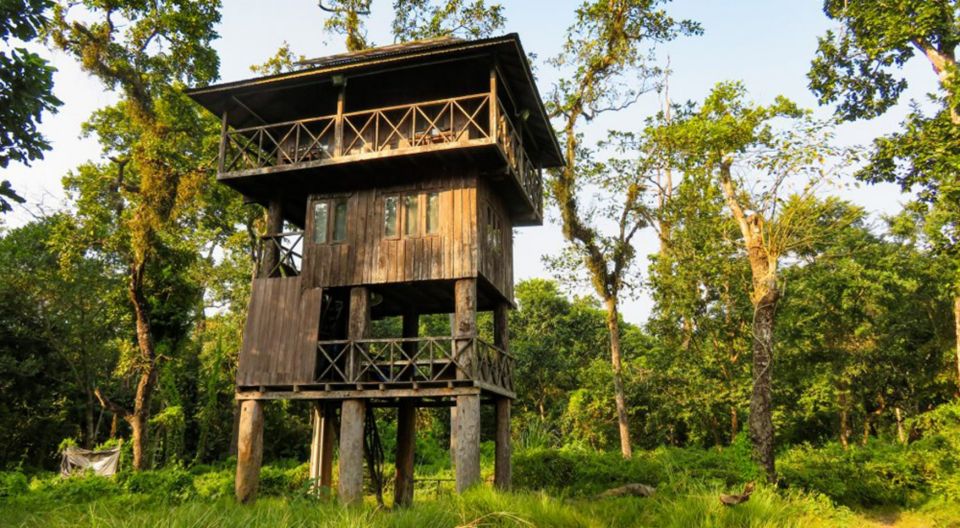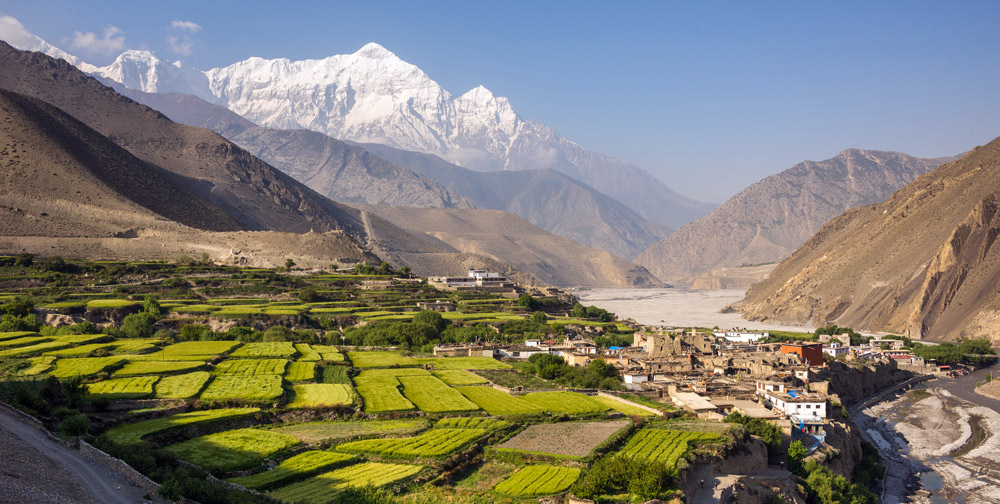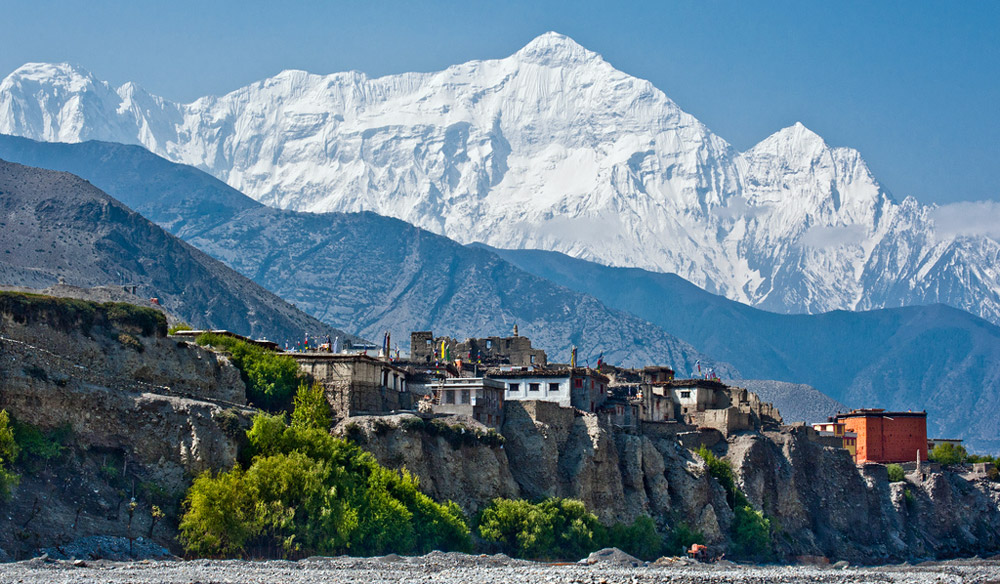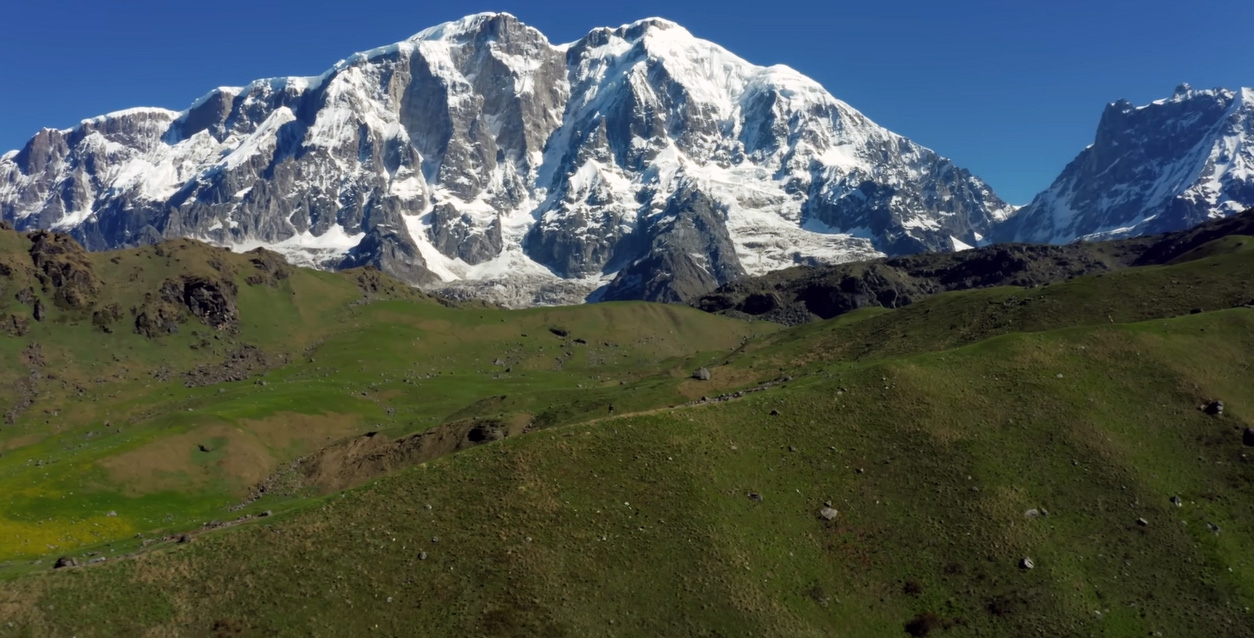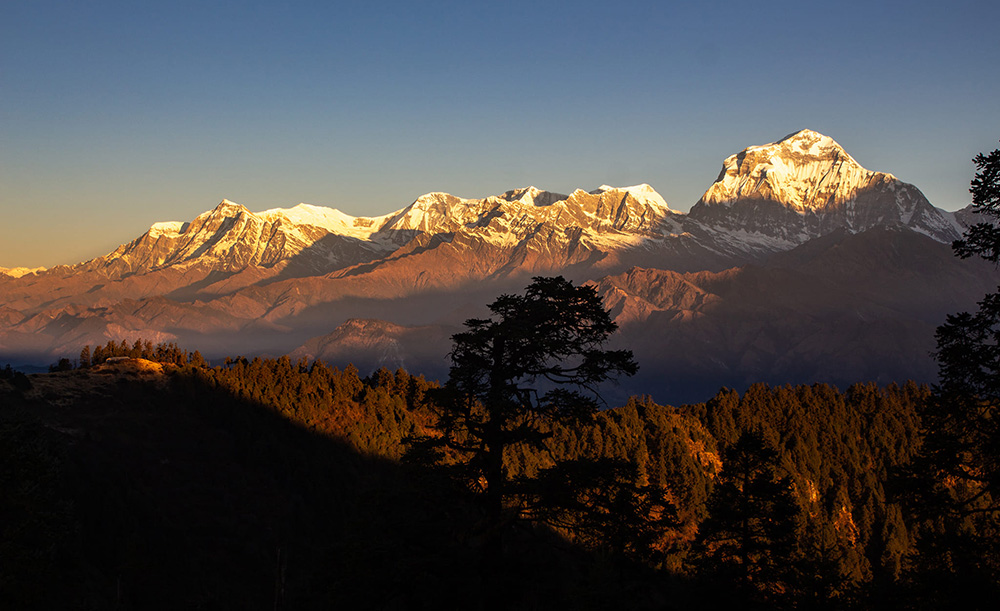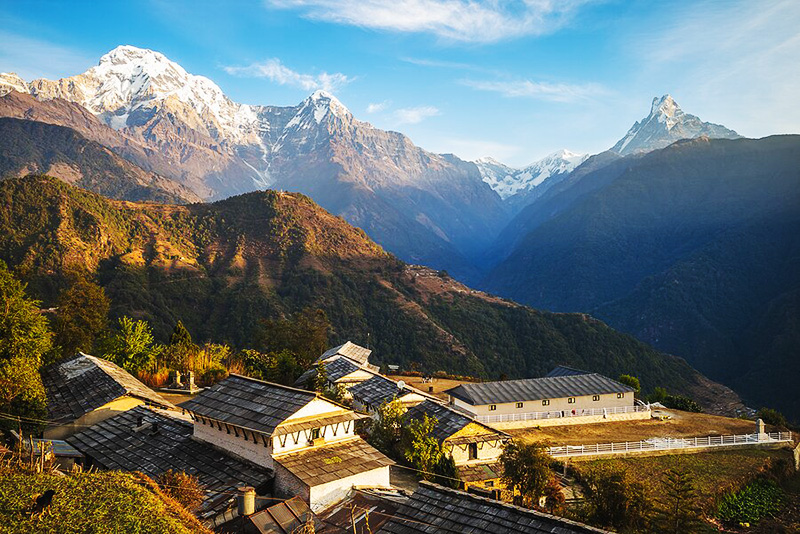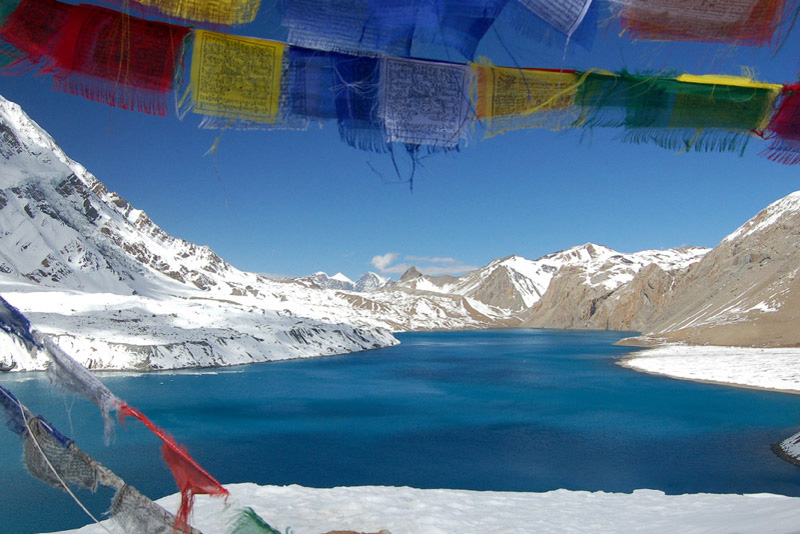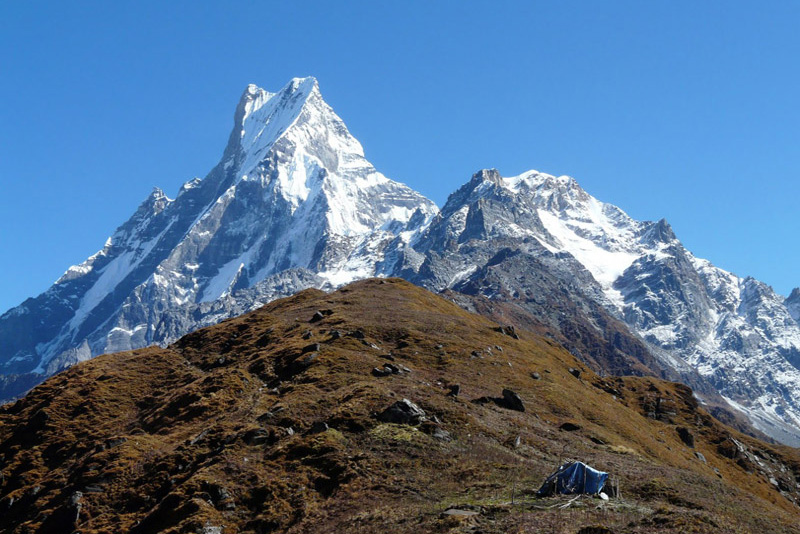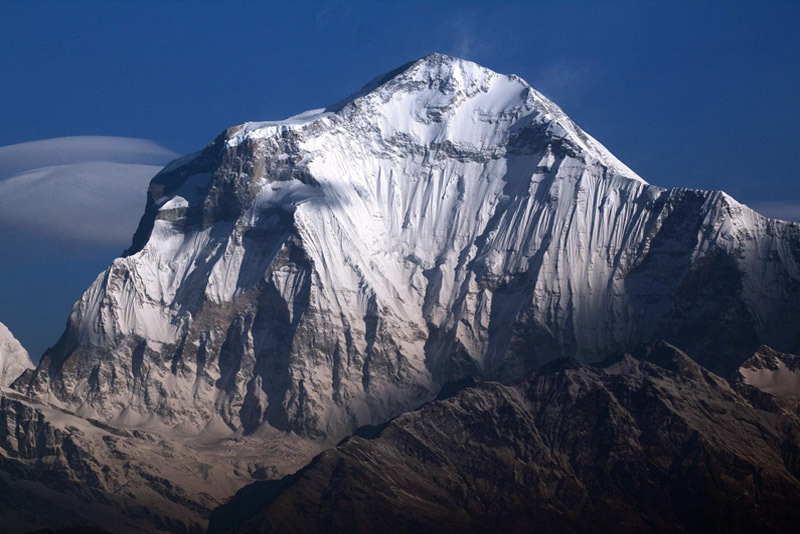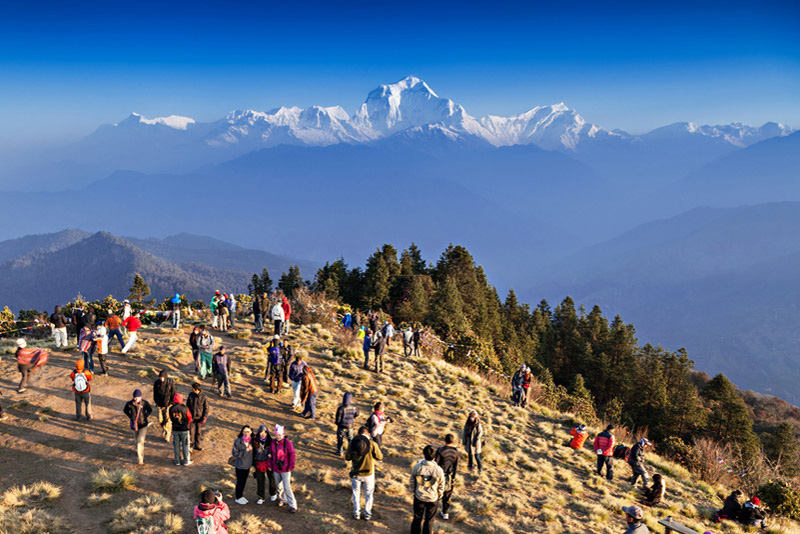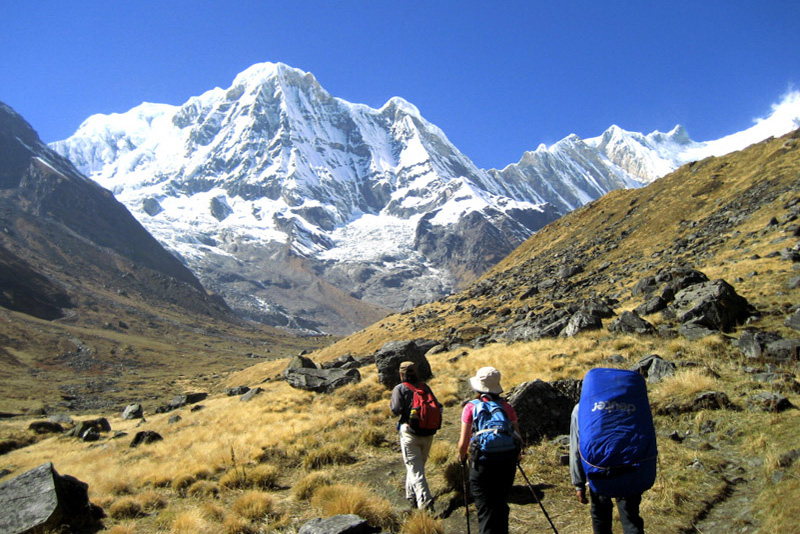Jomsom Muktinath Trek
Jomsom Muktinath trek is located north of Pokhara and is easily accessible from Pokhara through a short flight. Jomsom is a settlement located at the bottom of the world’s deepest gorge in the Kali Gandaki Valley, between two enormous mountains. From Jomson, it is possible to walk in either direction along the Circuit; the popular trip to the Buddhist and Hindu holy site of Muktinath follows a historic trade and pilgrimage route across the Himalayas.
Sunrise and mountain vistas from Poon Hill; Hot springs at Tatopani; World’s deepest Kaligandaki Gorge; Typical Thakali villages in Tukuche and Marpha; Monasteries at Tukuche, Marpha, Kagbeni, Jharkot, and Muktinath; Muktinath’s perpetual frame.
From Kalopani, the Dhaulagiri and Tukuche peaks with the icefall in between are equally as impressive as Annapurna I and Nilgiri South. The vista of Nilgiri South remains nearly as far down as Tatopani, while Annapurna I reappears at Guithe. Rupse Chhahara is a lovely waterfall along the route.
Tatopani features hot springs by the river, and the steep walk to Ghorepani from here ascends through a deep forest that is packed with rhododendron trees near the end. Ghorepani has the best panoramic view of the Dhaulagiri and Annapurna ranges; from Poon Hill, 450m/1,475 ft higher, the view stretches from Dhaulagiri, Tukuche, and Nilgiri South to Annapurna I, Annapurna South, Hiunchuli, and Machhapuchhre. Annapurna South truly dominates the vista, and as you descend from Ghorepani to Nayapul, you can see the peak all the way to Ulleri. We drive an hour from Nayapul back to Pokhara.
Jomsom Muktinath Trek Highlights
The Jomsom Muktinath Trek is a popular and diverse trekking route in the Mustang region of Nepal. It takes you through dramatic landscapes, ancient villages, and significant religious sites. Here are some highlights of the Jomsom Muktinath Trek.
Diverse Landscapes: Experience a wide range of landscapes, from subtropical forests to arid, high-altitude desert-like terrain. This trek offers a unique blend of natural beauty.
Kali Gandaki Gorge: Traverse through the Kali Gandaki Gorge, often referred to as the world’s deepest gorge, with the towering peaks of Annapurna and Dhaulagiri on either side.
Jomsom: Visit Jomsom, the district headquarters of Mustang, known for its unique culture and traditional architecture. It’s also a gateway to the Mustang region.
Muktinath Temple: Reach Muktinath, a sacred pilgrimage site for both Hindus and Buddhists. The temple complex features natural spring water and 108 water spouts believed to cleanse sins.
Panoramic Mountain Views: Enjoy stunning views of the Annapurna and Dhaulagiri mountain ranges throughout the trek, especially from vantage points like Poon Hill.
Trekking Through Annapurna Conservation Area: The trek takes you through the Annapurna Conservation Area, providing opportunities to spot diverse flora and fauna, including rare species.
Ghorepani: Explore the charming village of Ghorepani and hike up to Poon Hill for breathtaking sunrise views over the Himalayas.
Cultural Encounters: Interact with local communities, including Thakali and Gurung villages, and gain insights into their traditional way of life, architecture, and hospitality.
Natural Hot Springs: Relax in natural hot springs at Tatopani, providing a soothing experience for tired muscles after days of trekking.
Diverse Flora and Fauna: Experience a variety of ecosystems, from lush forests of rhododendron and oak to the arid highlands, supporting diverse wildlife and plant life.
Apple Orchards: The region is known for its apple orchards and production of local apple products, providing a unique culinary experience.
Proximity to Jomsom Airport: The trek begins and ends in Jomsom, a location with a well-connected airport that offers easy access to the region.
The Best time for Jomsom Muktinath Trek
The best seasons for the Jomsom Muktinath Trek are the post-monsoon (autumn) season from September to November and the pre-monsoon (spring) season from March to May. These months offer the most favorable weather and trekking conditions for a safe and enjoyable experience. Here’s why these seasons are recommended.
Post-Monsoon (Autumn) Season (September to November):
Stable Weather: Autumn is considered the best trekking season in Nepal. The weather is stable, with clear skies, minimal rainfall, and comfortable temperatures during the day.
Excellent Visibility: The clear skies provide exceptional visibility, allowing trekkers to enjoy unobstructed views of the mountains and the surrounding landscapes.
Moderate Temperatures: Temperatures are mild and pleasant during the day, making it comfortable for trekking and exploration.
Pre-Monsoon (Spring) Season (March to May):
Stable Weather: Spring is another popular trekking season in Nepal. The weather is generally stable, with clear skies, minimal rainfall, and pleasant temperatures during the day.
Blooming Flora: The rhododendron forests and other vegetation come to life with vibrant blooms, creating a colorful and picturesque backdrop for your trek.
Clear Mountain Views: The clear skies offer excellent visibility, allowing you to enjoy panoramic views of the surrounding mountains and landscapes.
Moderate Temperatures: Similar to autumn, temperatures are mild and comfortable, making it enjoyable for trekking and exploration.
Both of these seasons provide an excellent opportunity to experience the beauty and cultural richness of the Jomsom Muktinath Trek. Keep in mind that the trek takes you through diverse landscapes, from subtropical valleys to arid highlands, so being prepared with appropriate clothing and gear is important.
When you arrive at Tibhuvan International Airport, our guide will pick you up and take you to your hotel in the bustling Thamel district of Kathmandu. Depending on your arrival time, you can choose to relax for the next journey, see the city’s attractions, or shop for adventure gear in one of Kathmandu’s many adventure supply stores. We’ll assemble our bikes and be ready for the journey in the afternoon.
After breakfast drive for Pokhara, takes about 6 hours by road. The beautiful scenery will make our drive interesting. Arrive in Pokhara, hotel check-in and then you will be free for your own activities. Evening, you will be taken for an hour boating trip on the Nepal’s Largest Fewa Lake.
An early morning fly to Jomsom then trek to Kagbeni. Jomsom is a large village as it is administrative centre of the region that contains the airport, army camp, & numerous hotels, shops, banks & government offices. Start trek to Kagbeni takes about 4 hours of easy walk through river banks and small village Eklai Bhatti at 2730m. Today we will be staying at village called Kagbeni at 2810m a small beautiful village rich in Tibetan cultures & their unique hospitality.
After breakfast continue second day trek to Muktinath Temple which is one of the most important and sacred pilgrimage site both for Hindus and Buddhists lies in the district of mustang at an altitude of about 3,749m. Today we will be having lunch at small village called Jharkot at 3500m. After lunch continue walk for Ranipauwa where we have many tea houses and lodges for the overnight stay.
Today’s trip to the village of Manang, higher up in the Annapurna range, is lovely. Our track becomes wider as the landscape shifts from jungle to desert alpine, giving us our first impression of being in the high Himalaya. Although the ride isn’t overly technical, the surface can occasionally be mushy and filled with loose pebbles. It would be wise to proceed slowly today given the constantly rising altitude. Manang is well above high altitude—more than 3,600 meters—and we’ll notice the consequences when we pedal. In a pleasant trekking teahouse, we’ll spend the night and adjust to the altitude.
The Annapurna mountain range is visible to our left as we climb along several gravel roads. After descending and traversing several bhattis, we have now reached Tatopani. Due to the hot springs in this area, it has long been a popular halt for weary trekkers.
Most trekkers climb to Ghorepani from Tatopani, but if we run out of time, we can make a quick exit via Beni. Regardless of the path we take, we must cross two consecutive suspension bridges, the first over Kali Gandaki and the second over Ghar Khola. As we trudge up the stairs from Ghar Khola. Ghara, 1700m/5610ft away from Tatopani, is a tranquil, non-touristy location. As we leave Ghara and its farmlands, the trail contours the basin, making for a pleasant stroll. With expansive terraced fields, Sikha is about 1,920 meters from Ghara. Along the entire length of the path, there are tea houses where we may pause for a drink and take in the valley’s pastoral atmosphere and breathtaking landscape. As we gain altitude, the mountain views only improve, and Phalate and Chitre respectively lie ahead. From Chitre to Ghorepani, there is essentially no human habitation. It is a steep, peaceful ascent through forests of rhododendron, birch, and magnolia, interspersed with meadows from which the peaks appear magnificent.
Your guide will determine the sunrise time and inform you at the prior evening’s meal. From Poonhill, one of the best places to view daybreak, we witness a spectacular sunrise across Dhaulagiri, Tukuche Peak, Nilgiri, Annapurna South, Annapurna I, Machhapuchhre (Fishtail), and a number of other peaks. After some time at the vantage point, we return to Ghorepani for breakfast. After breakfast hike to Trikhedhuga. The trail passes through Nangethanti, Ulleri, and Banthanti before arriving to Trikhedhunga.
This is the final day of the hike. After breakfast, we begin our hike towards Nayapul, which translates to New Bridge in Nepali. We hike down the Burungdi River today, crossing a few suspension bridges. As soon as we reach Nayapul, we drive to Pokhara and after hotel check-in, free time for relaxation.
After enjoying the natural and cultural beauty of Pokhara, we start driving to Kathmandu. We finally get to Kathmandu after about 6-7 hours. We can either take a break or go see the sights in the capital city.
Today we will take you to the airport to catch your flight out of Nepal. Alternatively, if you’d like to stay longer, we may make additional travel arrangements to assist you continue your Nepal experience.
- All necessary ground transfers.
- All necessary accommodations as per the itinerary.
- Tea House accommodations during the trek.
- Daily breakfast, lunch and dinner during the trekking.
- All necessary paper works.
- All necessary trekking permits.
- Experienced and First Aid-trained trekking guide.
- Strong, helpful porters.
- Comprehensive medical supplies.
- Trekking map.
- Insurance of all local team.
- Warm clothing and trekking gear for staff.
- Sleeping bag and trip duffle bag.
- Trekking certificate issued by us.
- Welcome and farewell dinner in Kathmandu.
- Nepal Visa fee.
- International flights.
- All meals not mentioned in inclusions.
- Personal expenses not stipulated.
- Optional add-ons.
- Gratuities.
You might also like...
Top Add-on Trips
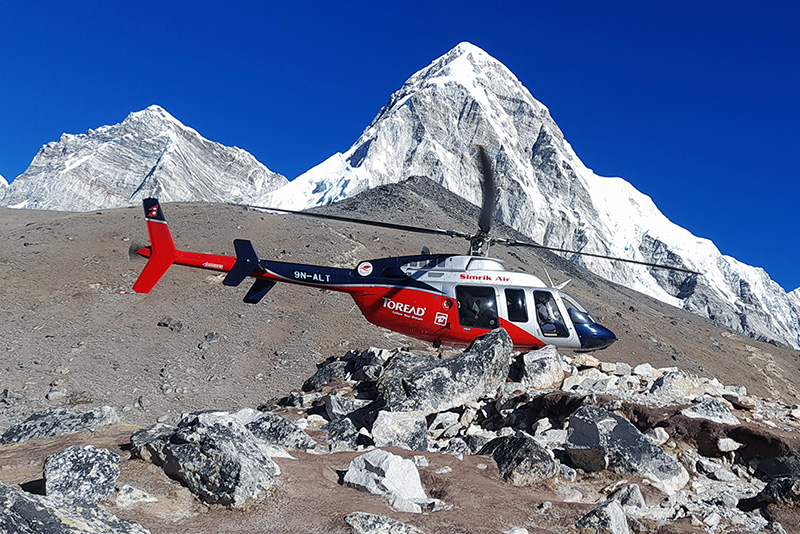
Everest Base Camp Helicopter Tour

Monastery Stay Tour
